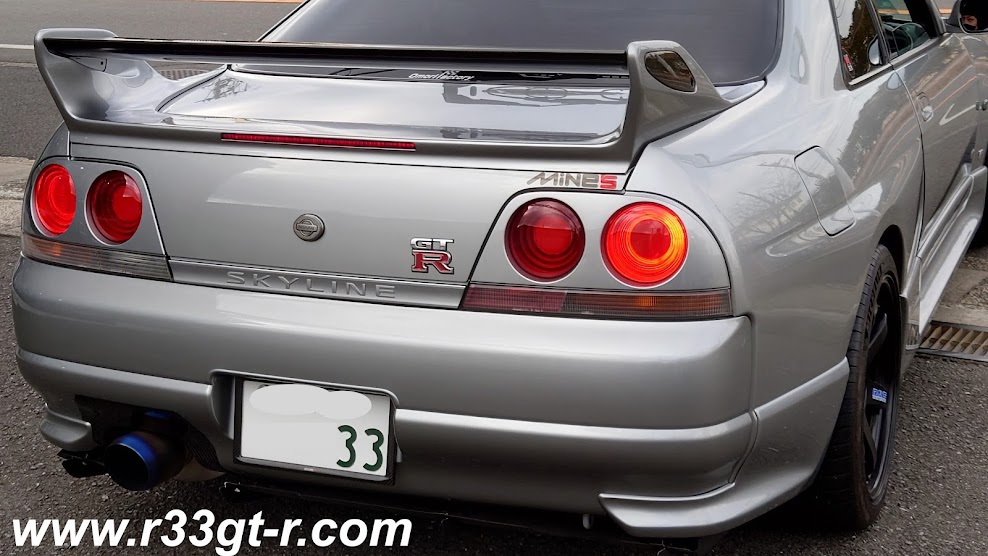Given how more modern cars have nice, brightly lit (and even sometimes OLED based) gauge clusters, replacing the OEM incandescent light bulbs is a popular mod for these older Skylines. It's easy and the difference is dramatic.
 |
OEM bulbs on top, LEDs on bottom
(This photo and next two courtesy of the seller's Yahoo Auction page) |
I can't remember exactly when I first replaced the OEM light bulbs in my car's gauge clusters for LEDs (maybe in 2009?), but I initially used these that I found on Yahoo Auctions, sold by a guy who apparently hand makes these very interesting "flower" type LED bulbs:
 |
T10 size for the main gauge bulbs, and T6.5 for the auxiliary bulbs
-this is for the R32 gauge panel but it's the same for the R33 |
He claimed that, as an R32 owner he had tried several different types of LEDs but was never satisfied with the brightness, so he fashioned his own. I too was never able to find LEDs that looked like this, so I gave it a shot... and they were good, but I always wondered, could they be better?
 |
| Here is a better view of these "flower" LED bulbs - handcrafted mess? |
So I did some research, and found the latest tech LEDs with labels such as "CREE" and "SMD" - and they usually listed wattage as well. These were widely acknowledged as much brighter than earlier LEDs. I mean, if you believe the hype, who wouldn't want more brightness, and more power??
Obviously, these seemed to be built in a proper factory, had higher wattage and were brighter and so while those "flower" bulbs I had gotten off of Yahoo Auctions were pretty good, I presumed that using higher tech, more powerful LEDs would result in an overall better experience. So I went ahead and ordered a set of 5 bulbs for the main gauge cluster (T10 size).
I then went ahead and installed them, only to end up with this:
 |
Can you see how some numbers don't look as bright as the others? Yes, I have OCD.
Incidentally, this photo was taken just last week, not at the time of the original install of the CREE LEDs |
If you look at the photo, you can see how the "60," "80" and "160" seem to be dimmer than the other numbers - and indeed they are. The light dispersion simply isn't as good despite these newer type LEDs being supposedly brighter. Also, I noticed that these LEDs actually run hotter as well.
 |
| The newer CREE SMD LED on the right (might be the 5050 chip type?) |
Around the same time, I had gotten
Robson Leather to work their carbon laying process on the standard plastic gauge surround. It looks great... at least in daylight.
The end result:
 |
| Top is OEM, bottom is real carbon overlay by Robson. |
Unfortunately, it turns out that at night, when backlit, the carbonized piece was letting some light through. There seemed to be some tiny pinholes - about 3 - which let in some light. Nothing major but enough to bother me (again, OCD).
However, as I almost never drive at night, yes it took me almost 3 years to get annoyed enough to decide to fix these problems.
First, I went and reinstalled the flower type LEDs:
 |
| Ahh, much better, all the lighting appears consistent |
Second, I figured out that the pinholes in the carbon overlay that was letting light through, was likely due to process where Robson scrapes down the surface - as you can see in this photo from the backside and the yellow circle, if there are indents then scraping might result in the plastic being very thin or, perhaps even have pinholes.
 |
| Where I found some light leakage |
The solution wasn't to paint it black, like I had postulated; rather, some black electrical tape did the trick.
But this wasn't all. While I had everything apart, I wondered whether it made sense to replace ALL the bulbs with LEDs. In the end I decided that the warning lights, I could live with regular incandescent light bulbs. But, I decided I would try to see how LEDs would work on those lights which I use more frequently and thus, would want the LED's long life as well as brightness.
Unfortunately, the first experiment, using LEDs in the turn signal indication lights, did not go well:
 |
| LED on the left, and OEM bulb on the right. |
I definitely prefer the look of the green arrow on the right, the left arrow actually looked blue! So LEDs don't work here.
On the other hand, the hi-beam indicator DID come out well:
 |
| Before, with OEM bulb |
 |
| An LED. Much more crisp! |
So now I have the main gauges with LEDs installed not just for the back lighting, but also for the high beam.
I also have done the HVAC panel, the defogger switch, and the hazard light switch, (I may not have blogged about this) however because there are no hot spot issues with those, I've left the LEDs in there alone.
So why am I doing this all of sudden? Stay tuned...







































